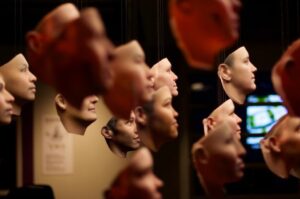
ID R&D has outperformed the competition in the National Institute of Standards and Technology’s first evaluation program of passive facial presentation attack detection algorithms.
The evaluation program saw the participation of 82 algorithms from 45 developers, with ID R&D getting more top rankings than any other developer across various metrics in a branch of the testing program focused on impersonation. (The other branch of testing focused on attacks meant to evade a positive identification in a database; ID R&D did not participate in this part of the program.)
NIST’s evaluations leveraged sophisticated spoofing mechanisms, including replay attacks and silicon masks. Each participating algorithm was evaluated on its performance both in terms of the security of its solution and its convenience. ID R&D got top rankings on both counts in testing concerned with the detection of photo prints and replay impersonation attacks — a notable achievement given that such attacks are relatively common in digital onboarding and authentication.
In announcing ID R&D’s success in the evaluation program, the company’s executives emphasized the importance of delivering a PAD solution that is effective while enabling a positive user experience. As CEO Alexey Khitrov explained, the ID R&D team believes that “biometric security should be frictionless”.
“Using just a single image frame, we’ve managed to achieve near-zero error rates with a solution that is completely transparent to users, setting a new benchmark for the industry,” added the company’s Chief Security Officer, Konstantin Simonchik.
The PAD success under NIST’s scrutiny offers the latest sign of ID R&D’s commitment to technological innovation. Earlier this year, the Mitek company received a patent for a novel presentation attack detection system aimed at the threat of deepfakes, which detailed how visual transformers could be used to focus AI algorithms on only the most important data during neural network training, thereby delivering a highly effective liveness detection system that is nevertheless extremely fast.
The full report on NIST’s evaluation of passive PAD algorithms — part of its recently announce Face Analysis Technology Evaluation program — can be accessed from the agency’s website.
–
September 29, 2023 – by Alex Perala






Follow Us